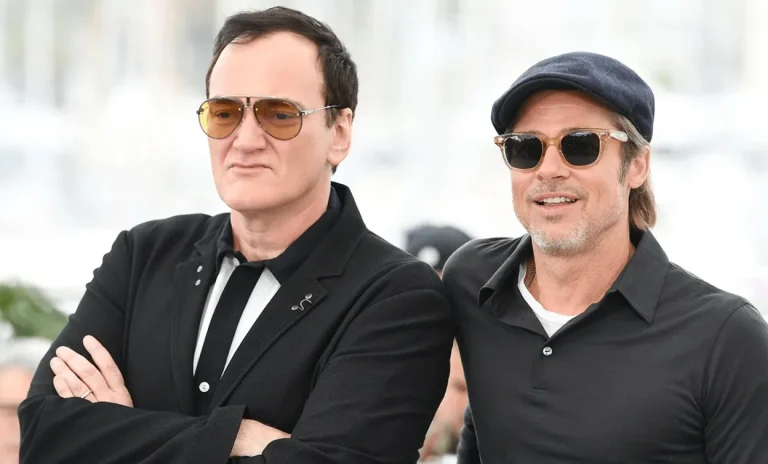Golda Meir, a name synonymous with resilience, leadership, and pioneering spirit, remains an enduring figure in the annals of history. Born in Kiev in 1898 and later becoming one of the most influential women in politics, Meir’s life story is a testament to her unwavering dedication to the state of Israel and her extraordinary journey from a humble beginning to the pinnacle of political power. On the occasion of the release of Guy Nattiv’s 2023 movie ‘Golda’ starring the legendary Helen Mirren, we delve into the remarkable life and legacy of Golda Meir, a trailblazer who broke barriers, defied expectations, and left an indelible mark on the world stage through her pivotal role in shaping the destiny of Israel during a tumultuous period in its history.
What is the movie ‘Golda’ about?
In 1973, Golda Meir faced critical inquiries from the Agranat Commission regarding Israel’s stance in the wake of the 1973 oil crisis. During this pivotal period, Henry Kissinger, the U.S. Secretary of State, engaged in delicate discussions with Meir, highlighting the complexities surrounding increased American support for Israel.
Kissinger emphasized the challenging predicament posed by the oil crisis and urged Meir to consider a significant concession: relinquishing control of the Sinai Peninsula, which Israel had acquired during the 1967 Six-Day War. He made it clear that the continuation of robust U.S. support was contingent on Israel’s willingness to make this strategic move.
In a surprising turn of events, Anwar Sadat, who, like Golda Meir, was proficient in English, stepped into the diplomatic arena. Sadat expressed his readiness to establish diplomatic relations with Israel on one pivotal condition: the return of the Sinai Peninsula to Egyptian sovereignty.
This intricate diplomatic dance between Meir, Kissinger, and Sadat marked a crucial turning point in the Middle East, where the fate of a region hung in the balance, and diplomatic finesse held the key to forging new alliances and preserving stability.
Who was Golda Meir?
Golda Meir emerged as one of the trailblazing women worldwide to assume the role of a head of state, guiding Israel through its tumultuous early years. Despite initial headlines that dubbed her “Grandmother Elected Prime Minister,” Golda Meir was a force to be reckoned with, far more than just a skilled babka-baking bubbeh.
Taking office as the Prime Minister of Israel in March 1969, Meir’s ascent followed the tragic passing of her predecessor, Levi Eshkol. Remarkably, Meir successfully maintained unity within her government during the early stages of her premiership. Notably, her reformed Alignment party achieved a remarkable victory in the 1969 general election, surpassing all other Israeli parties.
A central theme of Meir’s tenure as prime minister was her unwavering commitment to fostering peace in the Middle East. Regrettably, this noble vision remained unattainable during her leadership. Nevertheless, Golda Meir, the astute Israeli politician, forged crucial diplomatic ties with other nations in her relentless pursuit of peace on the turbulent international stage.
What was the controversy surrounding her tenure?

Golda Meir remains a revered leader, yet her tenure as Israel’s prime minister was marked by both acclaim and controversy. Early in her premiership, she ignited a storm of debate by stating that “there was no distinct Palestinian identity,” a statement that continues to cast a shadow over her legacy.
Furthermore, while she earned praise for her composed leadership during the tumultuous Yom Kippur War of 1973, some have raised questions about her role in the events leading up to the conflict. Nevertheless, Meir’s premiership left an indelible mark on Israel’s trajectory, shaping its political landscape and etching her name in history as its inaugural and sole female prime minister.
Golda’s Involvement in the Yom Kippur War Explained:
The Yom Kippur War, a pivotal moment during Golda Meir’s premiership, erupted unexpectedly on October 6, 1973, when Syrian forces launched a surprise attack on Israel. Despite early warnings of Syrian troop buildup on the Golan Heights, Meir’s advisors reassured her that war wouldn’t happen without prior notice. Consequently, Israel was unprepared, leading to heavy initial casualties and losses.
However, with U.S. assistance, Israel managed to regroup and reclaim territory from Arab forces, culminating in a ceasefire on October 25, 1973, mediated by the United Nations. Though a brief conflict lasting only two weeks and five days, the Yom Kippur War had profound repercussions in the Middle East and raised doubts about Meir’s leadership.
Why did Golda Meir resign after the war?
As public dissatisfaction with the government continued to rise, Golda Meir faced growing challenges in keeping her coalition intact, posing a significant threat to the Labor Party’s governance. When she made her announcement, Meir candidly expressed, “I’ve come to the crossroads of this journey, and I can no longer bear the burden.”
What did she do after her resignation?
Following her resignation as Israel’s Prime Minister in 1974, Golda Meir embraced a more tranquil existence. Despite stepping away from her government role, her commitment to the causes dear to her heart remained unwavering. Meir maintained her public presence by addressing political issues, all while enjoying her retirement from active politics.
In 1975, she unveiled her memoir, “My Life,” a comprehensive account spanning from her early years to the conclusion of her premiership. This literary work was acclaimed for its candid portrayal of her life and career. It swiftly ascended to the ranks of the New York Times bestsellers, marking yet another triumph for Meir.
How did Golda Meir die?
Golda Meir passed away at the age of 80 on December 8, 1978, following a battle with lymphatic cancer. Mrs. Meir had been admitted to Hadassah Hospital in August for the treatment of an undisclosed back ailment. However, the hospital spokesperson revealed that she had also been grappling with a liver infection and jaundice.
Subsequently, doctors disclosed that she had silently battled leukemia for a remarkable 12 years, even during her tenure as Prime Minister from 1969 to 1974. Her resilience in managing her health condition during those years was truly remarkable. Unfortunately, her health took a significant downturn when she contracted viral hepatitis, ultimately leading to her passing.




![True Mothers [2020] Review: Naomi Kawase’s Potent Yet Frustrating Ode To Motherhood](https://79468c92.delivery.rocketcdn.me/wp-content/uploads/2021/02/true-mothers-768x432.jpg)




